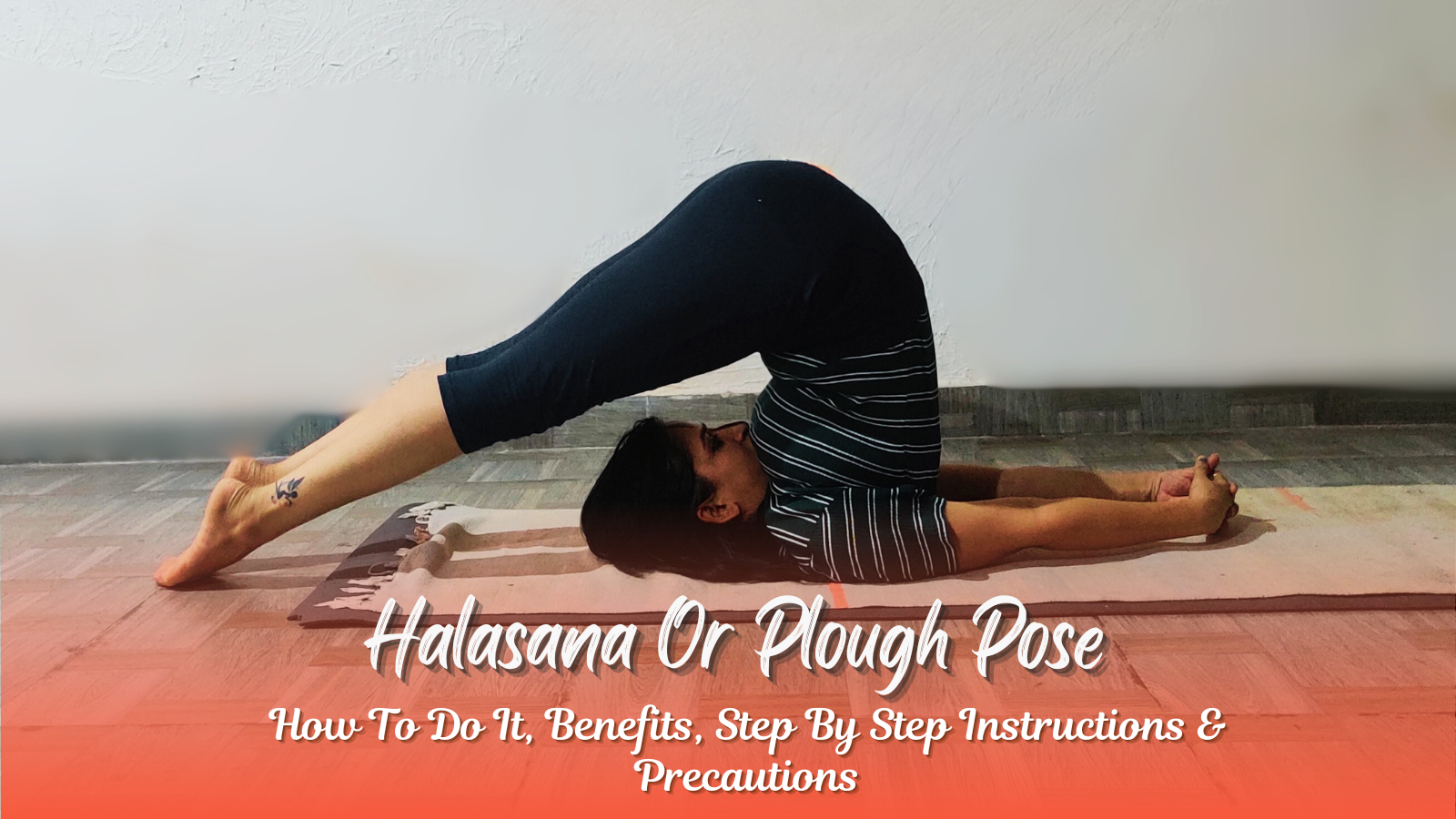Halasana Pose: Everything You Need to Know
If you’re looking to enhance your yoga practice, the Halasana pose, also known as the Plough Pose, is a fantastic addition. This intermediate-level inversion yoga pose offers a deep stretch, strengthens various muscle groups, and provides mental relaxation. In this blog, we will dive into the benefits, step-by-step guide, and precautions for performing Halasana effectively.
What is Halasana?
Halasana, or the Plough Pose, derives its name from the Sanskrit words hala meaning “plow” and asana meaning “pose.” It mimics the shape of a traditional Indian plow, hence the name.
This yoga pose involves a deep backbend, requiring flexibility in the spine, shoulders, arms, and hamstrings. It is an excellent pose for stretching and toning the entire body, especially the back and core. Though it may seem challenging at first, with consistent practice, it can be mastered, offering incredible benefits for both the body and mind.
Benefits of Halasana
The Halasana yoga pose is more than just a physical stretch. Here are some of the many benefits of Halasana:
- Stretches the Spine: This yoga pose stretches the spine, providing relief from tension caused by long hours of sitting or poor posture. It promotes spinal flexibility, improving mobility.
- Stimulates Digestion: The compression on the abdomen while performing Halasana massages internal organs, enhancing digestion, nutrient absorption, and waste elimination.
- Relieves Stress: As an inversion pose, Halasana helps increase blood circulation to the brain. This boost in blood flow triggers the release of endorphins, promoting relaxation and reducing stress levels.
- Tones the Abdominal Muscles: The Halasana position engages the abdominal muscles, helping to strengthen and tone the core, especially the obliques and transverse abdominis.
- Improves Flexibility: This pose increases the flexibility of the spine, hamstrings, and shoulders, making it beneficial for overall body mobility.
- Calms the Mind: Halasana induces a calming effect on the nervous system, reducing anxiety and promoting a sense of peace.
Step-by-Step Guide: How to Perform Halasana
Here’s a detailed, step-by-step guide to help you master the Halasana pose:
- Starting Position: Begin by lying flat on your back with your arms by your sides, palms facing down. Keep your feet together and your body relaxed.
- Lift Your Legs: Inhale deeply and lift both legs toward the ceiling, keeping them straight. Your body should form a 90-degree angle from the floor. Engage your core to support the lift.
- Lower Legs Behind You: As you exhale, slowly lower your legs over your head, bringing them to the floor behind you. Keep your knees straight. The goal is to touch the ground with your feet, but if this isn’t possible initially, aim to get as close as you can.
- Support Your Back: For extra support, place your hands on the floor beside you or interlace your fingers behind your back. If you’re more advanced, keep your arms straight to deepen the stretch.
- Hold the Position: Breathe deeply and hold the position for 15-30 seconds, focusing on relaxing your neck and shoulders.
- Coming Out of the Pose: To release, gently roll your spine down onto the mat, vertebra by vertebra, until you return to the starting position.
Precautions While Practicing Halasana
While Halasana offers numerous advantages, it’s important to be mindful of some precautions:
- Warm-Up: Before attempting Halasana, warm up your body with stretches that focus on your back, legs, and shoulders to prevent injury.
- Avoid Jerky Movements: Move into and out of the pose slowly. Sudden movements can strain the neck, shoulders, and spine.
- Listen to Your Body: Halasana can be intense, especially if you’re a beginner. If you feel any discomfort or pain, ease out of the pose immediately.
- Props for Support: If you find Halasana challenging, you can place a folded blanket or yoga block under your shoulders for extra support.
- Avoid During Menstruation: Women should avoid Halasana during menstruation, as inverted poses can disrupt the natural flow of blood.
- Don’t Force the Pose: Halasana requires flexibility in your spine and hamstrings. Don’t force your body to reach the full expression of the pose. Over time, your flexibility will improve, and the pose will become easier.
- Seek Professional Guidance: If you’re new to yoga or have medical conditions, it’s best to consult a certified instructor for proper form and adjustments.
Ardha Halasana: A Modified Version
For beginners or those with limited flexibility, Ardha Halasana (Half Plough Pose) is a great alternative. In this modified version, instead of bringing your legs all the way to the floor, you only lower them halfway. This version still provides many of the benefits, including stretching the spine and toning the core.
Does Halasana Reduce Belly Fat?
While Halasana does engage the abdominal muscles, it is not specifically designed to target belly fat. However, when practiced regularly, it contributes to overall fat loss as part of a balanced fitness routine. Combining Halasana with a healthy diet and other fat-burning exercises can help reduce belly fat over time.
Why Choose Yoga Teacher Training in Rishikesh?
If you’re looking to deepen your yoga practice and learn how to teach poses like Halasana, Rishikesh offers some of the best Yoga Teacher Training programs globally. Rishikesh is known as the “Yoga Capital of the World,” attracting yoga practitioners and teachers from all over.
- Best Yoga Teacher Training in Rishikesh: Rishikesh is home to some of the finest yoga schools that offer comprehensive courses.
- 300 Hour Yoga Teacher Training in Rishikesh: For those wanting an intensive course, the 300-hour program offers advanced yoga techniques and teaching methodologies.
- 500 Hour Yoga Teacher Training in Rishikesh: The 500-hour course is ideal for those looking to immerse themselves fully in yoga philosophy, asana, and meditation, ensuring you become a skilled and confident yoga instructor.
- 200 Hour Yoga Teacher Training Course in Rishikesh: If you’re new to yoga and want a foundational program, the 200-hour course provides the essential knowledge and practice needed to become a certified instructor.
Conclusion
Incorporating Halasana (Plough Pose) into your yoga practice can bring incredible physical and mental benefits, including improved flexibility, stress relief, and a toned core. Whether you’re a beginner or an experienced yogi, Halasana is a pose worth adding to your routine. Remember to practice with caution, listen to your body, and gradually work towards perfecting the pose. And, if you’re interested in advancing your yoga journey, consider enrolling in one of the best Yoga Teacher Training programs in Rishikesh to deepen your understanding and skills.


